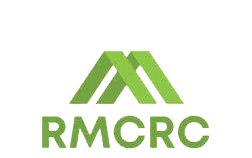Christopher Jensen is the President and Chief Executive Officer of RMCRC. He has over 30 years of executive leadership experience in mortgage banking. Since joining RMCRC, he has been instrumental in shaping the organization’s strategic direction, fostering a strong culture, and expanding its national footprint. As CEO, Christopher drives RMCRC’s vision of increasing access to credit and financing for affordable housing projects that serve low-to-moderate-income households. He cultivates broad-based relationships with external stakeholders, ensuring RMCRC remains a trusted leader in community reinvestment. His leadership is rooted in a passion for creating meaningful impact—expanding access to affordable housing and fostering a dynamic, collaborative work environment that upholds RMCRC’s core values of integrity, teamwork, and innovation.

The Economic Case for Affordable Housing Investments
Aligning financial strategies with community needs enhances both impact and compliance.
Brought to you by Rocky Mountain CRC

I recently toured the newly constructed Harris Community Village in Tooele, Utah — a project we had just completed with an incredible coalition of partners. The project created 66 units of affordable housing with supportive services for people recovering from homelessness and behavioral health challenges.
While there, I met a young man with special needs who proudly invited us into his apartment. It was spotless — tidy, organized, full of light. He beamed talking about it being his — not a couch at someone else’s place, but a real home.
He shouldn’t be the exception. That kind of stability should be the baseline.
For those of us in finance, especially those involved with Community Reinvestment Act (CRA) compliance, it’s worth asking: If this is what success looks like, are we using our dollars effectively to achieve it?
Every bank must meet CRA obligations. While the CRA is often viewed through the lens of compliance, it has the potential to be a catalyst for transformative community investment.
When CRA money is deployed solely to meet a requirement, it often ends up in projects that appear promising on paper but fail to create lasting community value. We miss the opportunity to do something that actually changes lives.
And here’s the thing: CRA dollars are uniquely powerful. They’re one of the few sources of capital intentionally directed toward underserved communities. But that power only matters if we point it in the right direction.
Affordable Housing Is a Strategic Use of CRA Capital
One of the smartest ways to use CRA funds is to invest in affordable housing, especially permanent supportive housing for people with complex needs. Why? Because the outcomes are measurable, the impact is visible, and the ripple effects touch everything from education to public health to local economies.
Housing-first models reduce jail time, emergency room visits and homelessness recidivism, according to the U.S. Interagency Council on Homelessness. One national review found that supportive housing can cut shelter use by 70% and reduce incarceration rates by nearly half.
This isn’t just about compassion. It’s about outcomes.
Housing is infrastructure. Without it, no community can thrive.
This Isn’t Just a Story About Homelessness
When people hear affordable housing their minds often jump to homelessness, but this issue runs far deeper than that. We’re talking about teachers who can’t afford to live in the districts where they teach. Nurses are commuting an hour because there’s nothing in their price range near the hospital. Young families are being squeezed out of starter homes by rising rents and stagnant wages.
A clean, safe home shouldn’t be out of reach for someone working full time.
Affordable housing isn’t charity. It enables people to contribute to their communities —economically, socially and civically. If we’re serious about building stronger communities, this is where we start.
Affordable Housing Is Also Good for the Economy
Affordable housing isn’t just a social issue: It’s an economic engine.
Lower rents mean more spending on local goods, which boosts small businesses and strengthens neighborhoods. Research from CommonBond Communities confirms that affordable housing enables residents to allocate a greater portion of their income toward essential expenses, such as food, healthcare and transportation, keeping money circulating locally.
Affordable housing also helps employers. When people can afford to live near their jobs, they’re more likely to show up, stay longer and be more productive. The National Low Income Housing Coalition (NLIHC) reports that high housing costs often make it difficult for workers to live near employment centers, impacting recruitment and retention.
It’s a long-term investment in people. Data from NLIHC also shows that children raised in stable housing — especially in lower-poverty areas — earn more as adults and perform better in school. That’s how you build intergenerational wealth and close opportunity gaps.
The CRA Can and Should Be About More Than Compliance
If you’re going to meet the requirement anyway, why not make it count?
In my experience, the institutions that get the most out of their CRA investments aren’t just checking boxes. They’re building partnerships. They’re aligning their capital with values. And they’re seeing long-term returns — not in profit margins, but in public trust, stronger neighborhoods and healthier markets.
The best CRA programs aren’t add-ons. They’re integrated into the bank’s strategy.
We have a tool. We should use it.
The CRA isn’t just a regulatory hurdle. It’s one of the most direct ways to move capital toward things that work.
Let’s move beyond the quick fixes that seem easy at first glance. With a bit more strategy and the right partnerships, we can channel CRA investments into initiatives that offer lasting, meaningful impact.
Because it all starts with a home.


